This week, Drs Chris and Helen find out how your fingers can reveal whether you're mathematically minded, and bridge-building ants that quite literally let themselves be walked over. Also, Astronomer Carolin Crawford takes us on a foray into outer space to discover the shape of the universe, we meet a geyser so tall that it spurts into space, and we Join Maggie Turnbull as she searches for nearby planets that could sustain life. Plus, in Kitchen Science, how to measure the speed of light using a microwave oven!
In this episode
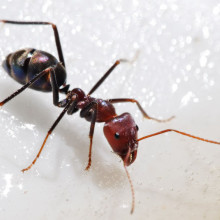
Ants use their own bodies for rapid road repairs
This week we heard some bizarre news from the world of the ants. It seems that some types of ants are prepared to get walked all over to let their fellow ants bring home the food. 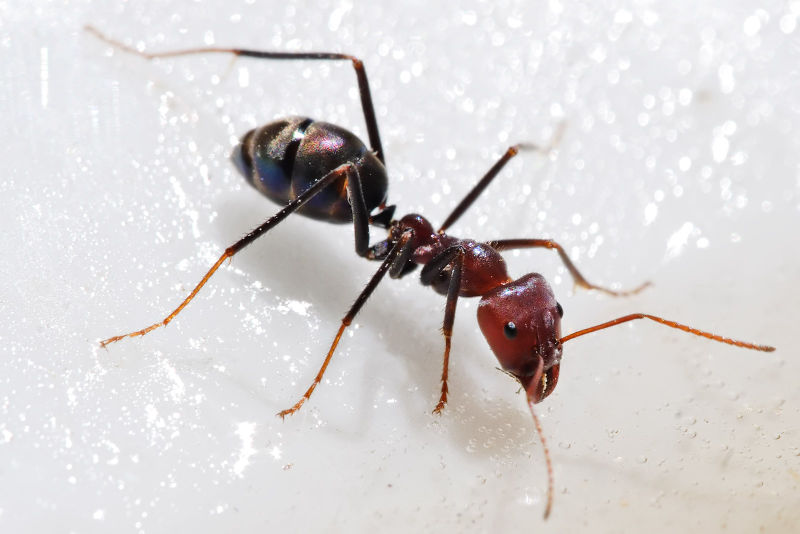
A team of scientists led by Scott Powell from the University of Bristol in the UK have been studying huge swarms of up to two hundred thousand army ants in the rainforests of Panama as they go in search of food. And they saw that some of the ants used their bodies to plug up potholes in the path of the swarm allowing other ants to walk easily over them.
To test exactly what was going on, the researchers brought a colony of ants into the laboratory and offered them planks to walk across with different sized holes drilled in them. And they discovered that the ants select holes that exactly fit their body size.
When the ants encounter a hole in their path, they walk around it and size it up. If they are the right size they climb in and block it up, otherwise they leave it for another bigger ant to plug. The ants vary in length from around 2mm to 1 cm (about .4 of an inch).
Once in place, the living floor can stay put for hours while thousands of other ants walk over them.
And the researchers found that when ants used themselves to plug up holes, the colony was more efficient at collecting food because they can scuttle long at much higher speeds. So this shows us that the behaviour of just a few of the worker ants can have really important affects for a whole huge colony. If only there was such a simply and easy way of mending our roads...

03:55 - It's all in the wrist, or should that be index finger?
It's all in the wrist, or should that be index finger?
A study of 75 school children has shown that a photocopy of their hands is all that's needed to predict their literacy and mathematical skills.
Dr Mark Brosnan, from Bath University, measured the lengths of the index and ring fingers from images of the childrens' hands and compared the results to their SAT (standardised assessment test) scores. The results showed that the greater the length of the index finger relative to the ring finger, the better the subjects performed in maths, and lower the ratio the better their literacy skills.
Similar relationships have been found in the past for sporting ability, and scientists think that the relative lengths of the digits reflect the levels of hormones to which a developing baby is exposed in the uterus. The more testosterone there is floating around, the longer the index finger, and the team also think that testosterone could promote the development of brain areas linked to numerical and spatial skills. Oestrogen on the other hand is thought to do the same thing for those parts of the brain concerned with verbal ability. "We're not suggesting that finger length measurements could replace SATs," says Brosnan, "but finger ratio provides us with an interesting insight into our innate abilities in key cognitive areas".

Virgin Shark Gives Birth
Back in 2001, a rather far-fetched story hit the headlines declaring that a baby shark had been born in an aquarium tank to a virgin female shark. And it turns out, the immaculate conception did actually happen.
The miraculous birth of the bonnethead shark - a close relative of hammerhead sharks with their peculiar-shaped heads - took place in Henry Doorly Zoo, in Nebraska in the United States.
Until now scientists thought that the unlikely sex-free birth was probably a consequence of the females storing sperm from their time in the wild.
But now, 6 years later a genetic study carried out by a team of American and Irish scientists, has confirmed that it was indeed an immaculate conception - a process known scientifically as parthenogenesis. Instead of needing sperm from a male to fertilise their eggs, some females can produce embryos without having sex. In fact, parthenogenesis has been observed in birds, reptiles, amphibians and bony fish - but it has so far never been seen in mammals, and this is the first time its been observed in sharks.
This is certainly an incredible discovery to find that this form of asexual reproduction can take place in such a ancient group of animals - sharks in one form or another have been around on the planet for 450 million years.
But there is also a worrying side to this story. Baby sharks produced by this particular form of asexual reproduction, have much lower genetic diversity than their mothers which means they are much less well equipped to survive in the wild. So if male sharks become scarce in the oceans due to the heavy fishing pressure from us humans, it is possible that females will increasingly rely on this form of asexual reproduction, and ultimately shark populations could quickly loose vital genetic diversity.
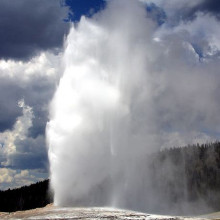
10:14 - Enceladus' Old Faithful
Enceladus' Old Faithful
with Dr Terry Hurford, NASA Planetary Geodynamics Laboratory
We begin our tour of the universe with a trip to Saturn, and one of its tiny moons, Enceladus. When the Cassini spacecraft flew past in 2005, researchers noticed some strange hot spots around Enceladus' South Pole. Scientists have now realised that these hot spots give rise to a gigantic geyser, which erupts regularly, a bit like Old Faithful here on Earth.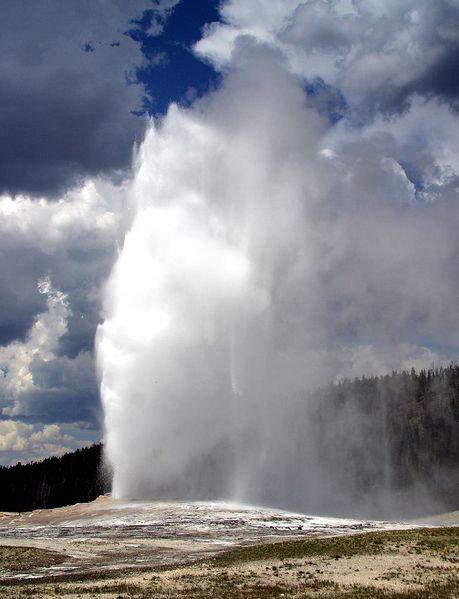
The geyser on Enceladus is on a completely different scale. When it erupts, it does so with enough force to send material out into space and some of this settles out to become part of one of Saturn's famous rings.
We spoke to NASA's Terry Hurford to find out more.
Chris - What powers this beast that you've seen on Enceladus?
Terry - There's some question about what the heat source is, as Enceladus is so small that it should have cooled off a long time ago. Something has kept this moon warm, and it's most likely tidal friction: Because of its orbit [around Saturn] it's constantly re-shaping itself, and this re-shaping leads to friction, which ultimately powers the geysers.
Chris - So how does that heating process work? Why should just orbiting a planet make this moon warm?
Terry - Well, if it were in a circular orbit, it probably wouldn't be warm, but it's in an orbit which is not completely circular. Because it's not circular, the distance to Saturn is constantly changing, as is the position of Saturn in its sky. This constantly causes the body to re-shape itself, and in the process of re-shaping itself it dissipates heat.
Chris - So it's a bit like rubbing your hands together, and getting some warmth between them?
Terry - Right.
Chris - So when that happens, how does it give rise to the phenomenal 500 mile high jet of water on the south pole of this moon?
Terry - In the process of warming itself, it can create some liquid water around the south pole. When that liquid water is exposed to the vacuum of space it can then erupt at speeds that then allow it to escape the surface. Because the body [Enceladus] is so small, it doesn't take much velocity to get things off the body and into orbit around Saturn.
Chris - Why is it only the south pole that gives rise to this phenomenon, why aren't we seeing these things spurting out all over this moon? It must be getting tugged and squashed all over the place.
Terry - That's a good question too. In the process of heating the body some of the material becomes warmer and that material has a lower density so it causes the whole body to reorient itself so that the warmer area is located at one of the poles, either north or south. In this case, it just happened to go to the south pole.
Chris - You're now studying this using Cassini, what does this tell you about what the structure of that moon must be? There is, presumably, a big source of liquid water underneath somewhere, could there be life in there even?
Terry - The work that I've done is looking at stresses in the south pole, and specifically when the features in that open and close because of the tides. The tidal stresses pull open some of the fractures and when they pull open it then allows the liquid water to be exposed and this allows the eruptions to occur. In order for the stresses to be high enough to do this, I speculate that there's got to be a global ocean of water underneath an icy crust, similar to Europa, a moon of Jupiter.
Chris - So if you've got liquid water and it's warm enough to give rise to a geyser phenomenon, that suggests that you've got similar situations to those found here on Earth around hydrothermal vents, so you could see life there.
Terry - Right, that makes it a very interesting place to look for microbial life or some sort of simple life forms.
Chris - And how are you going to get to the bottom of that? Its obviously not convenient to take a 3 million mile trip to drop by Saturn and take samples. Is there a way to answer that question simply?
Terry - The fact that we have the geysers erupting means that the liquid water is somehow getting out to the surface and ultimately into space. So you may not have to actually land something on Enceladus to look and see what kinds of things are inside the water, since it's being transported to you. It's much more convenient on Enceladus to look for this than on Europa, as Europa has a very thick ice shell and it would be very hard to get to the liquid water underneath it. Enceladus may not be as thick, and the water is getting right up to the surface.
How can human DNA be separated out from food in your mouth?
DNA samples are contaminated with bacteria, and other contaminants, but to analyse the sample we amplify human DNA sequences and use a 'probe', a little piece of genetic material that only latches on to specific sequences of DNA. We use probes that only recognise human DNA sequences, which are then bound to the sample, so the only patterns you see relate to human DNA in the sample.
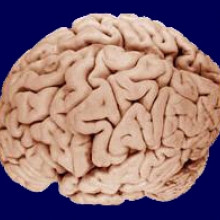
18:15 - Science Update - Diseases of the Brain
Science Update - Diseases of the Brain
with Chelsea Wald and Bob Hirshon
Bob - This week for the Naked Scientists, we're going to talk about new research on diseases of the brain. I'm going to report on scientists are learning about the connection between schizophrenia and depression. But first, Chelsea has this story about a surprising new diagnostic tool...
Chelsea - In the future, neurologists may stockpile canisters of nasty odors, like those of pungent cheese, rotten meat, or skunk. They'd be used to screen for degenerative brain diseases like Alzheimer's. University of Cincinnati psychologist Robert Frank says the sense of smell is often a first casualty of these diseases. So he and biologist Robert Gesteland invented a simple sniff test.
Robert Frank (University of Cincinnati): And it's all based on the observation that if you're sniffing and you don't encounter a smell, you take bigger sniffs than when you're sniffing and you do encounter a smell.
Chelsea - Their device measures the air pressure created by a sniff and compares how hard a patient sniffs at a strong odor versus an empty canister. They use all kinds of smells, but Frank says unpleasant odors are especially useful.
Robert - If you just reflect on your experience in life, and you imagine yourself testing the milk for whether it's sour, or entering into a public restroom that's particularly odiferous, you can appreciate that those kinds of smells are very effective at suppressing your desire to sniff.
Chelsea - If the patient sniffs just as hard at odors like that as he does at any empty canister, further testing would determine whether it's a result of nasal problems, simple aging, or the start of more serious brain damage.
Bob - Thanks, Chelsea. Schizophrenia and mood disorders like depression tend to run in the same families. A recent report in the journal 'Neuron' shows how different kinds of damage to a single gene, called DISC1, may lead to one illness or the other. The researchers bred two strains of mice, each with a different type of DISC1 damage. According to medical geneticist David Porteous at the University of Edinburgh in Scotland, the two strains developed very different symptoms.
David Porteous (University of Edinburgh): So that we had on the one hand, mice that were hyper-excitable and unable to mask out auditory stimulation. And on the other, we had mice that were behaving as if they had a depressed mood and low sociability.
Bob - They then tested the mice on different types of psychiatric drugs.
David - The ones with the more schizophrenia-like behavior responded positively to the treatment with the antipsychotic and those with the mood disorder responded to the treatment with an antidepressant.
Bob - It's not yet known what causes the damage, when it happens, or how each type of damage leads to such different symptoms. But it's hoped that solving these mysteries will help doctors spot the illnesses earlier and treat them more effectively.
Chelsea - Thanks, Bob. Next time, we'll tell you how physicists are combining diamonds and lasers to simulate the insides of giant planets. Until then, I'm Chelsea Wald...
Bob - ...and I'm Bob Hirshon, for AAAS, The Science Society. Back to you, Naked Scientists!
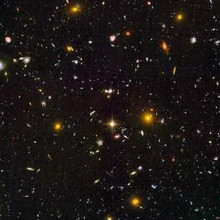
22:13 - The Shape of the Universe
The Shape of the Universe
with Dr Carolin Crawford, University of Cambridge
Chris - A lot of people probably look up into the void of space and think "how did all this get here?" And wonder what the black bits between the stars are... So Carolin; what is the fabric of space?
Carolin - Straight into the deep questions! What is the fabric of space? Well there's so much in space; there are stars, there are planets, there are galaxies... All of this started right at the point of the big bang, so all of it starts there and it expands outwards, and it's all devolved into these wonderful things we see. 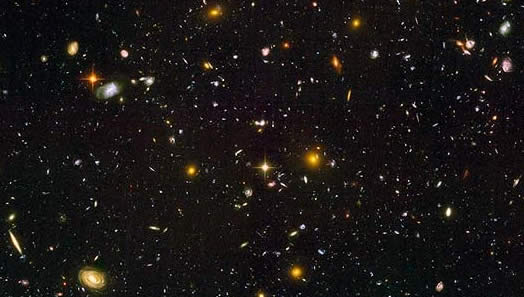
Chris - But is space a vacuum? Is it some kind of material like that which we refer to as the 'ether'? What is space?
Carolin - Well space is never truly a vacuum, you have these enormous voids in space and even those might have a few particles in, but generally we regard it as a vacuum. But that's in the enormous spaces between the stars and dust and gas clouds and the galaxies.
Chris - So when you say that everything started with the big bang, and that was about 14 billion years ago...
Carolin - 13.7 thousand million years ago...
Chris - That's a very precise answer...
Carolin - Oh yes, I looked it up before I came in...
Chris - But how do we know that that's when it happened?
Carolin - Well we can track the motions of the galaxies, they're all expanding outwards after this initial explosion and we can work out how long they've taken to get there travelling at that speed. You back track it and find that they all come together about 13.7 thousand million years ago.
Chris - So when you say galaxies, can you just define what is a galaxy and how did they come into being?
Carolin - Galaxies are giant aggregations of stars. In something like our own galaxy you have maybe 100 thousand million stars held together by gravity. Galaxies come in shapes that are like frisbees, footballs, rugby balls, and they're just big collections of stars all held together. All of these are scattered throughout the universe.
Chris - But why would they form a galaxy? Why would they cluster together in that way, why wouldn't they just spread out? If you had something that kicks out in a massive explosion like we think the big bang was, why didn't it just shower everywhere with material? What causes it to come together in this way?
Carolin - That's because the universe was never exactly the same density throughout, even in these very early stages just after the big bang there were some bits that were just slightly more dense than others. If there's more matter, there's more gravity, so that pulls more matter towards it... You can regard these as the seeds, which pull stuff together and it starts to accumulate things that are eventually going to grow into the galaxies that we see today.
Chris - Why would they be different sizes and shapes, why wouldn't they end up as a fairly consistent size and aggregation? They have different structures, don't they?
Carolin - They have got different structures, and they key things might be: Whether they formed near another galaxy; whether you've got two galaxies forming in the same area, or they formed in isolation; whether the gas cloud was originally spinning; as things that are spinning tend to condense down into flat discs, so maybe that is how you get a spiral galaxy as opposed to the ball shaped ones which maybe came from a much more static cloud.
Chris - Andrew Gaspar has emailed and asks, "I understand that there are two types of galaxies. Some have spiral arms and others an elliptical shape..."
Carolin - That's right.
Chris - "So what processes would form those two different types?"
Carolin - Well, we think with galaxy formation that everything was very hot after the big bang, so you start off with this enormous cloud of very hot gas that begins to cool. As the gas cools, it starts off by radiating x-rays, it cools down more and eventually it condenses down into the stars that form a galaxy. If you have a large cloud of gas which is quite static, then maybe it will condense into an elliptical shaped galaxy. If it's rotating ever so slightly, the things that condense from it will end up disc shaped such as the spiral shaped galaxies like we think our Milky Way is.
Chris - What's in the middle of our galaxy that keeps us all spinning around it?
Carolin - Well our galaxy is kind of like two fried eggs stuck back to back. The white forms a frisbee shape but the yoke represents a massive ball of stars. Right at the centre of the big ball of stars is a supermassive black hole.
Chris - Presumably we can't see it, so is that inferred that there must be something big and heavy there? Is that what's attracting and holding everything in the shape that it's got?
Carolin - Well, it's not the supermassive black hole that holds our galaxy together, but we know it's there because it affects the motion of the stars that are close to it. We can see them responding to a mass that's about 3 million times the mass of our sun within a tiny, tiny volume. The only thing we know that can be like that is a black hole. But it's not that which keeps the whole galaxy together, you've got the stars that we see in the bulge and in the disc and there's also the stuff that you can't see, the dark matter. It doesn't radiate in any waveband, but we know it's there because of the motions of the stars. That's crucial in holding our galaxy together.
Chris - Why doesn't the black hole just eat the ball of stars that are around it, why don't they just fall in?
Carolin - Because it's probably eaten anything that came close to it, the galaxy's been around for a long time, a thousand million years, so it's eaten everything within it's vicinity. There are stars that come close to it and orbit around it, but it's probably cleared out it's immediate surroundings and things further out orbit around it, but they are so far away and the gravity is such that it doesn't pull things into it, just into orbit around it.
Chris - It's said, and I think Edwin Hubble discovered, that the universe is expanding. We know that because if you look at distant objects they seem to be getting further away from us, they're so called 'red-shifted'. Why is it that when you look at some galaxies they appear to be coming towards us, because if space is getting bigger wouldn't they all be moving away from each other?
Carolin - On the whole, everything is moving away from each other. Whichever galaxy you do the measurements from you find that, on the whole, all other galaxies are moving away from you. That's the general motion of space-time moving out, this is the expansion of the universe. But of course, if you've got a galaxy that's actually quite close to you, you might start feeling the gravity of that galaxy. For example, the Milky Way is moving towards our nearest big neighbour, the Andromeda galaxy. Even though we're both moving out, as space-time expands, we're still moving towards each other. So sometimes you get these little local peculiarities where galaxies pull together under gravity even though they're still moving outwards.
So if you get things very close to you then sometimes due to these little peculiarities they can seem to be moving towards you, but in general everything else is moving out
Chris - I've got a couple of questions from listeners here. Keith in Watford asks, "what determines the orbital distance from a star at which planetary material will coalesce? Is it just gravity?"
Carolin - That's a difficult question. It also depends on what your star is made of, how big it is and how much stuff is left behind. If you have a planet that's made of gases and volatiles, like Jupiter or Saturn, they're only going to condense much further out from the sun. They tend to get swept out by the winds from the young star forming in the nebula and condensing down to form the planetary system. If they're made of solid rock material, like Earth, Mercury, Venus or Mars, they tend to coalesce much closer in, so it does depend what kind of planet you're forming.
Chris - Fred and Scott have asked - "The Earth orbits the Sun in a non-circular orbit, if outer space is really cold, and the Sun is really hot, how close would you have to get to the Sun in order to be about room temperature?"
Carolin - Room temperature where on the Earth?
Chris - They don't specify, so I guess you have full degrees of freedom, if you'll pardon the pun.
Carolin - It's difficult, because as you go up from the surface of the Earth, you get colder, also, on the side of the Earth facing away from the Sun it will be different from the day side. It's actually a very difficult question to answer. As there's so many different ways to approach it.
Chris - Recently there was a Swedish space walk, and they were talking about how when people are in space, they must wear reflective space suits because if they're in the full glare of the Sun their body will quickly heat up to boiling point. In the dark side though, it's very cold because you radiate the heat straight away again. So it is a difficult question to answer, because if you're having sunlight hitting you, you soak up a lot of radiation, and if you're out of direct sunlight, you're not.
Carolin - Also, if you think about aeroplanes, you can see the condensation freezing on the outside of the aeroplane, and although you're above the clouds, you're still nowhere near space.
Why are there two sorms of galaxy?
We think with galaxy formation that everything was very hot after the big bang, so you start off with this enormous cloud of very hot gas that begins to cool. As the gas cools, it starts off radiating x-rays, it cools down more and eventually it condenses down into the stars that form a galaxy.
If you have a large cloud of gas which is quite static, it will condense into an elliptical shaped galaxy. If it's rotating even very slightly, the galaxies that condense from it will end up disc-shaped such as the spiral shape our Milky Way is.
Why do planets form where they do?
It depends on what sort of planet is forming, and it also depends on what your star is made of, how big it is and how much stuff is left behind. If you have a planet that's made of gases and volatiles, like Jupiter or Saturn, they're only going to condense much further out from the sun. They tend to get swept out by the winds from the young star forming in the nebula and condensing down to form the planetary system. If they're made of solid, rock material, like Earth, Mercury, Venus or Mars, they tend to coalesce much closer in.
How close would you have to be to the sun to be at room temperature?
[We put this question to Carolin Crawford as part of the Planets and Cosmology show]
Carolin Crawford: Room temperature where on the Earth?
Chris: They don't specify, so I guess you have full degrees of freedom, if you'll pardon the pun.
Carolin: It's difficult, because as you go up from the surface of the Earth, you get colder. Also, on the side of the Earth facing away from the Sun it will be different from the day side. It's actually a very difficult question to answer as there's so many different ways to approach it.
Chris: Recently there was a Swedish space walk, and they were talking about how when people are in space they must wear reflective space suits; because if they're in the full glare of the Sun their body will quickly heat up to boiling point. In the dark side though, it's very cold because you radiate the heat straight away again. So it is a difficult question to answer, because if you're having sunlight hitting you, you soak up a lot of radiation, and if you're out of direct sunlight, you're not.
Carolin: Also, if you think about aeroplanes, you can see the condensation freezing on the outside of the aeroplane, and although you're above the clouds, you're still nowhere near space.

41:35 - The Search for Life in Outer Space
The Search for Life in Outer Space
with Dr Maggie Turnbull, Space Telescope Science Institute, Washington DC
Chris - Now Maggie you've come up with a short list of planets which are in the habitable zones of stars. In other words they are at just the right distance from the star so that they are not too hot and not too cold, so they are what's called Goldilocks planets, but how do you look for that kind of thing?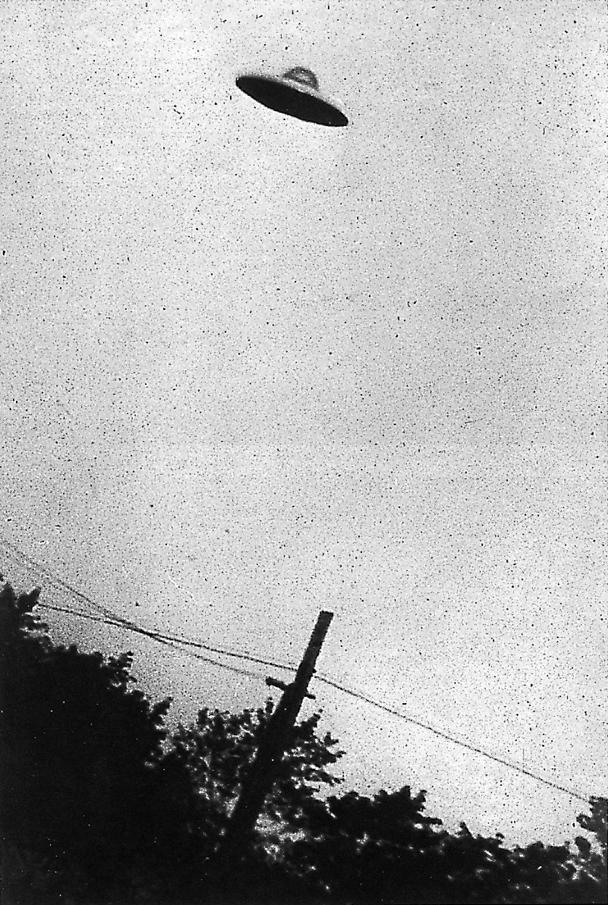
Maggie - Well it depends on what you are looking for. If you want to actually try to detect the planets themselves, then you have to build a space telescope that is able to somehow black out the light of the star, which is extremely bright, so that you can see the very faint light coming from the tiny planet.
Chris - People have come up with various ways to do that haven't they? There is this petal-shaped star shade so that you can use to blot out the sun and leave the planets on the outside. Other than that, are there any other ways to do it?
Maggie - Well the easier way to do it is if that planet had some sort of intelligent civilisation that was broadcasting its presence to the universe we could just listen for those signals. Which is of course what Search for Extra- Terrestrial Intelligence (SETI) scientists are trying to do. That puts the burden of technology on them, so that they have to outshine their stars at certain frequencies so that we can see them.
Chris - This seems like a good opportunity to talk to Tony, who is in Westcliffe, because he wants to ask something about that, Hi Tony.
Tony - Good evening Sir. We've been sending out radio waves for about 80 years, and given that they travel at the speed of light, the nearest star that could hear them would be about 80 light years away, wouldn't it? So I wondered how many planets fall within that range?
Maggie - You can imagine this sphere around the Earth, going out into space, that is filled with radio noise that we have emitted because of our technological activities. If you want to count the very first broadcasts, then the radius of that sphere around us is something like 80 or as much as 100 light years. I don't think in terms of light years, I think in terms of parsecs and 1 parsec is about 3 light years. If we say that this sphere is about 30 parsecs in radius, I know that there are about 3 to 5 thousand stars inside that sphere around us, and of those, about 2 thousand are sun-like stars.
Chris - So like our own star?
Maggie - Not exactly like our own, but similar enough to our star that they could live long enough and have planets that could have life on them that are somewhat similar to our own.
Chris - That's quite a lot, isn't it?
Maggie - Yes, its a lot but you also have to consider that not every one of those stars is going to have planets and out of those that do, they are not all going to have Earth sized planets that are in the habitable zone. So I would say that a reasonable number would be about 10% of those, and anywhere between 1 to as many as 5 hundred habitable planets are within that sphere of noise that we've created. You have to keep in mind that most of the transmissions that are leaking out into space are doing just that, they are leaking, they are not beamed intentionally at any star system, so they are very weak by the time they get there. Also, all the signals that we leak out into space are not going equally in all directions, sometimes you have to be at a certain spot to be able to pick them up.
Chris - Great question Tony, thank you very much. So carrying on with that theme how do we try to pick up alien signals? Assuming that those people are technologically ahead of us and they are sending things our way, how do we try to find them?
Maggie - Well, we have to listen! Getting time on a large enough telescope to be able to detect transmissions of the type that we are actively leaking out into space, is actually a challenge. But one of the exciting things that is happening soon with regard to SETI is the construction of the Allen Telescope Array in northern California. When that's completed that will really be our first opportunity to begin monitoring the skies 24-7 for intelligent signals coming from other star systems.
Chris - You have narrowed down the number of planets which you think, fairly locally, might play home to foreign life. How have you done that and how many of them are there?
Maggie - I have attempted to do this exercise by picking out stars that are similar to the Sun with regard to a lot of different factors. We don't want to spend our telescope time looking at stars that are young as those systems are probably still filled with the debris of planetary formation; you've got huge collisions going on with comets and asteroids. Those planets are not very nice places to live right now and no way do they have radio telescopes!
So we don't want to look at the really young ones, but on the other hand really old stars tend to not have a lot of the heavy metals like iron and nickel which are needed in order to form terrestrial planets. So really old stars or stars that just don't have enough of these metals in them are not good places to look either because they're not likely to have planets like the Earth.
Chris - So what does that leave you with?
Maggie - Well, we end up with a pretty substantial chunk of stars. I have a list in the order of 18 thousand stars that are really our top targets for SETI.
Chris - Are they anywhere near here?
Maggie - Some of them are very nearby. I think most people will have heard of Alpha Centauri. These are just examples though, I'm not saying these are the best places to look!
Chris - "This is where you'll find UFOs!?"
Maggie - Do not put me on the spot like that! [Laughs] I am not going to tell you what's the best one to look at but, for example, Alpha Centauri is the closest Sun-like star to us, it's only 1 parsec away, about 4 light years. It is actually in a triple star system, but maybe it could still be habitable to Earth. The second star actually gets a little closer than I'd like it to, so it's not ideal, but it's interesting because it's so nearby and it's so much like the Sun.
Epsilon Eridani is another bright star, which is actually a little bit less luminous than the sun. It's kind of an orange star; it's a little cooler so planets that are habitable would be a little closer to that star than they are in our solar system. That's one of my very favourite stars that I feel like we absolutely must look at.
How many planets could have heard our radio signals?
[We put this question to Maggie Turnbull as part of the Planets and Cosmology show]
Maggie Turnbull: You can imagine this sphere around the Earth, going out into space, that is filled with radio noise that we have emitted because of our technological activities. If you want to count the very first broadcasts, then the radius of that sphere around us is something like 80 or as much as 100 light years. I don't think in terms of light years, I think in terms of parsecs and 1 parsec is about 3 light years. If we say that this sphere is about 30 parsecs in radius, I know that there are about 3 to 5 thousand stars inside that sphere around us, and of those, about 2 thousand are sun-like stars. These are similar enough to our star that they could live long enough and have planets that could have life on them that are somewhat similar to our own.
This is a lot of stars, but you also have to consider that not every one of those stars is going to have planets and out of those that do, they are not all going to have Earth sized planets that are in the habitable zone.
So I would say that a reasonable number would be about 10% of those, and anywhere between 1 to as many as 5 hundred habitable planets are within that sphere of noise that we've created.
You have to keep in mind that most of the transmissions that are leaking out into space are doing just that, they are leaking, they are not beamed intentionally at any star system, so they are very weak by the time they get there. Also, all the signals that we leak out into space are not going equally in all directions, sometimes you have to be at a certain spot to be able to pick them up.
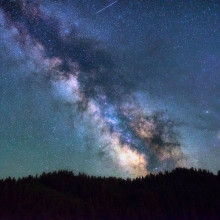
Do all stars belong to a galaxy?
[We put this question to Carolin Crawford as part of the Planets and Cosmology show]
Carolin: Well certainly all the stars we know about do form in a galaxy but solitary stars would be very difficult to find.
Stars can leave a galaxy. Sometimes two galaxies merge, and in this process they can throw stars out into the vastness of space.
So there may well be lots of orphaned stars out there, but they are very difficult to find. All of the stars we know about are in galaxies.

Could our universe be a small part of a bigger universe?
[We put this question to Carolin Crawford as part of the Planets and Cosmology show]
Carolin Crawford: Anything is possible. It's unlikely to be a star as we know it, as stars don't form until thousands of years after the big bang. There's always an idea that our Universe is just part of another Universe. This is really a philosophical question, as it's one that we cannot answer at the moment...










Comments
Add a comment